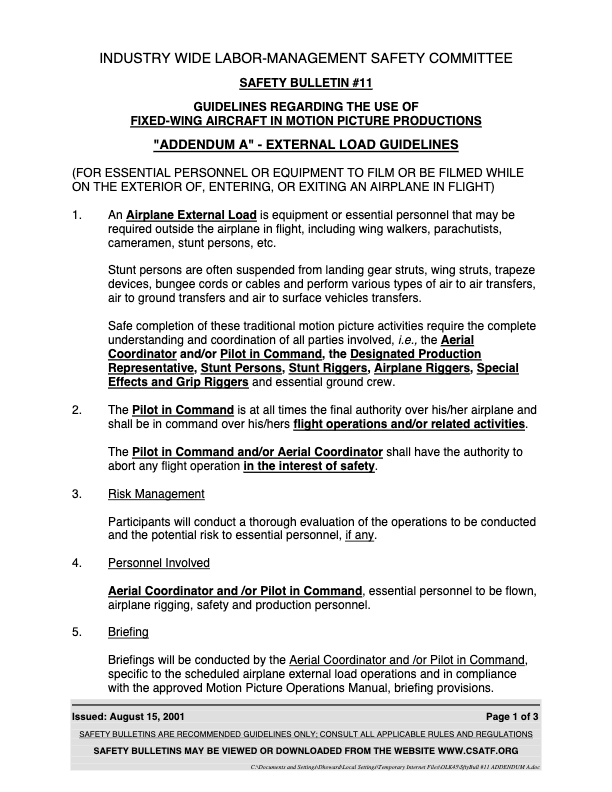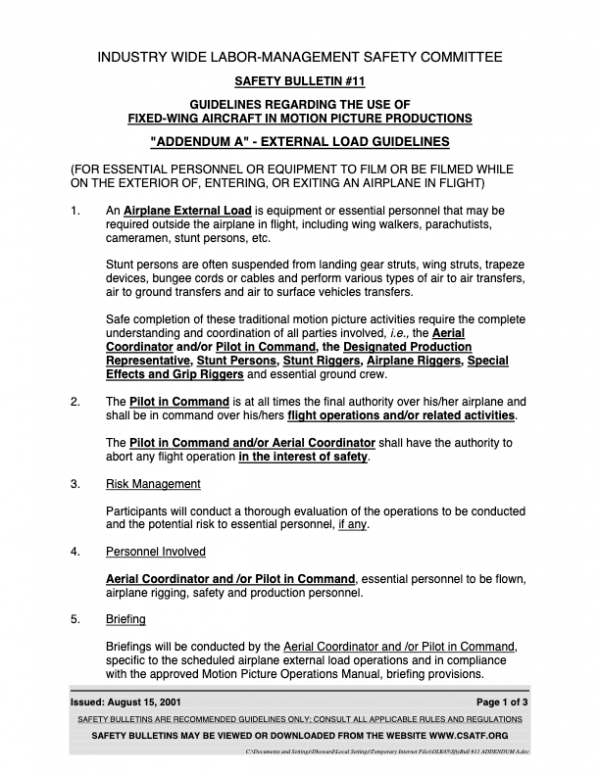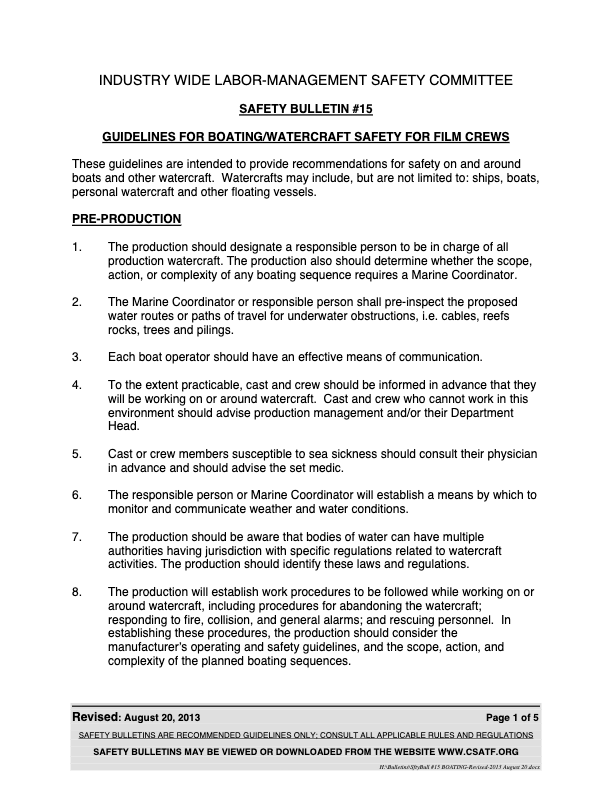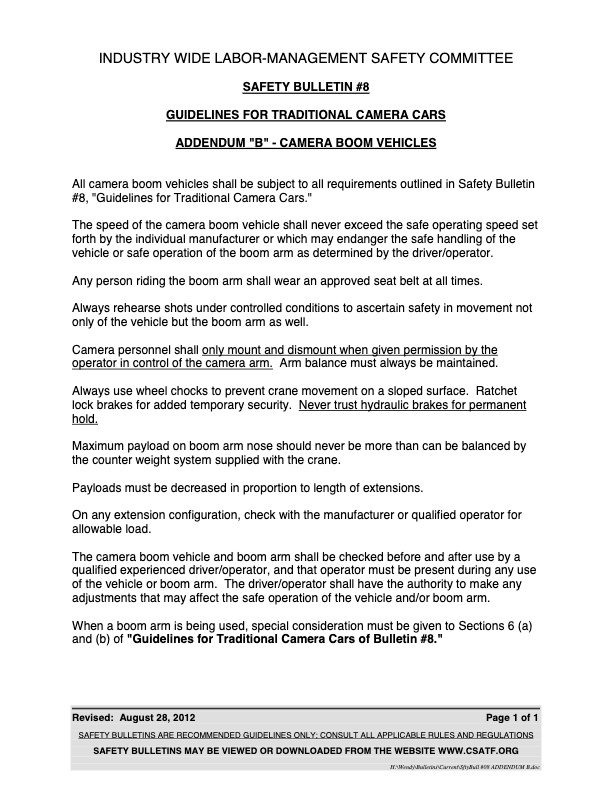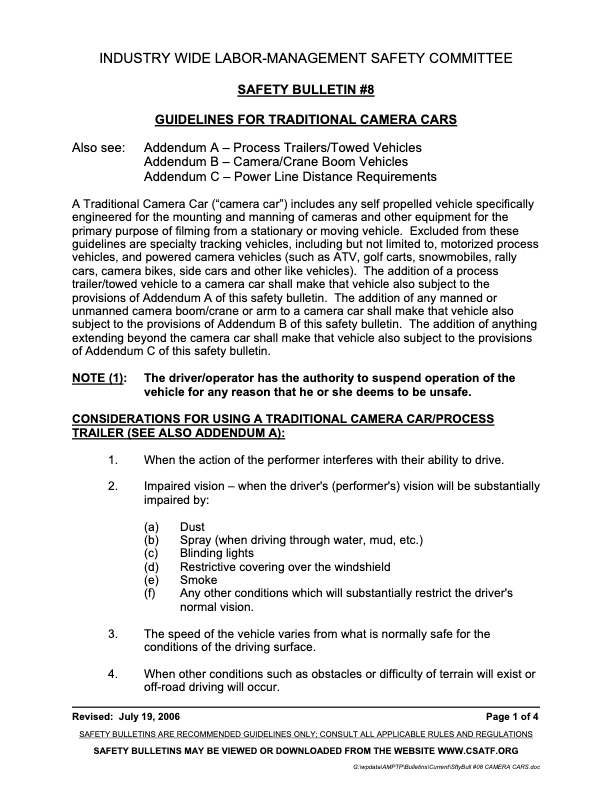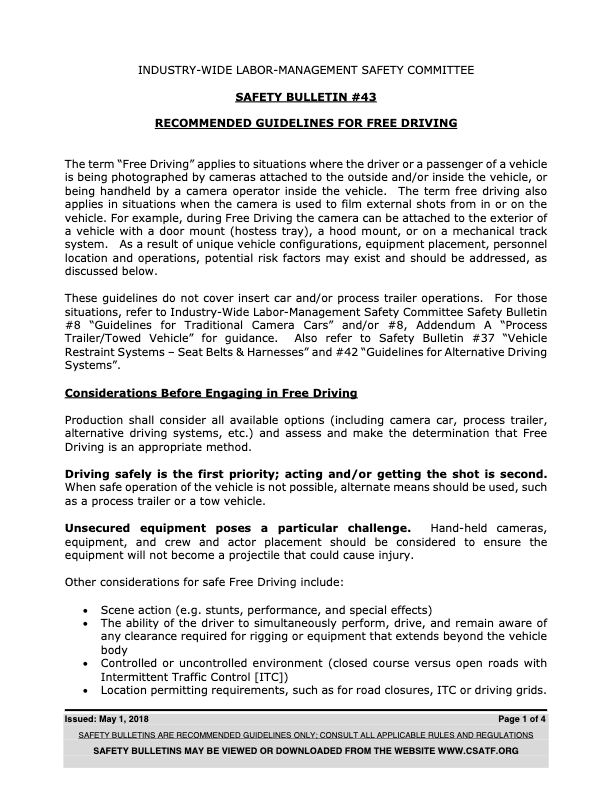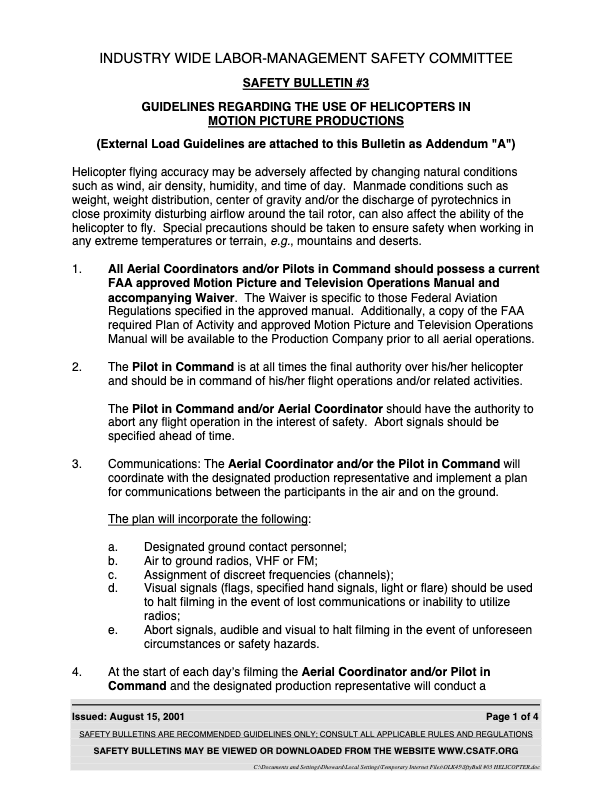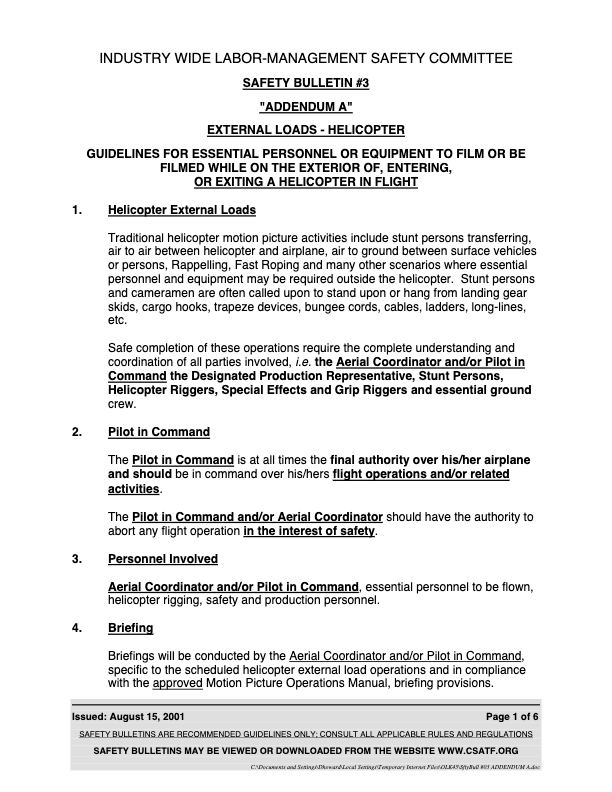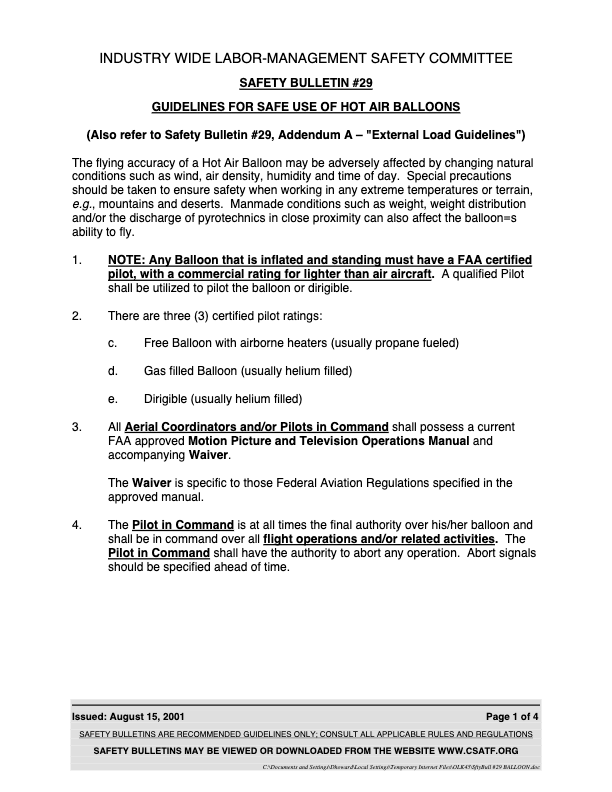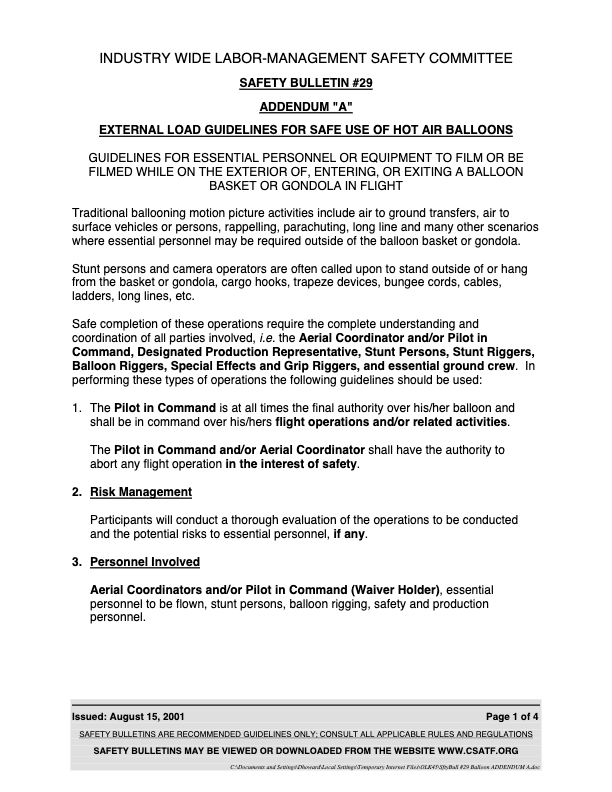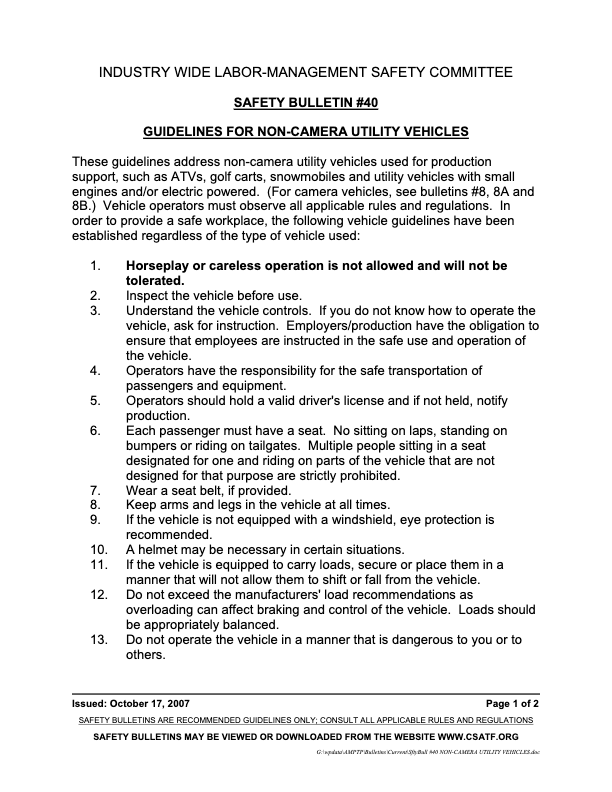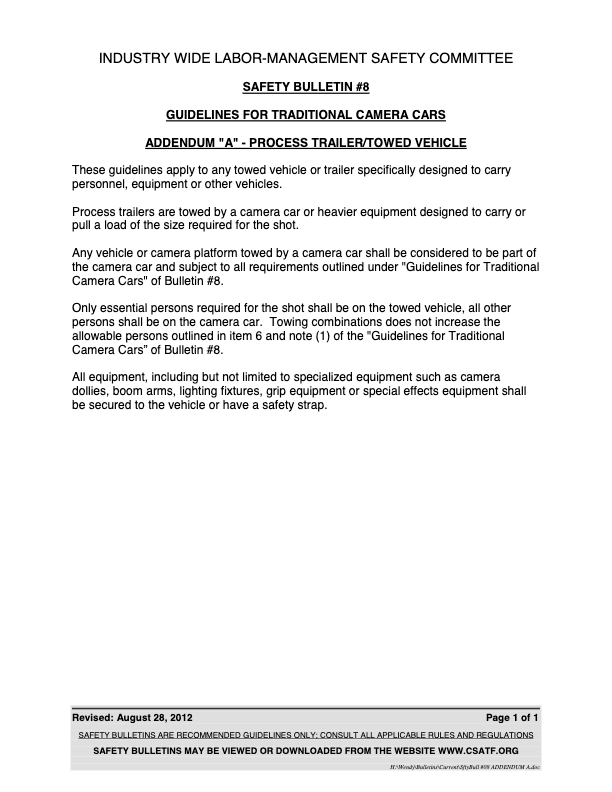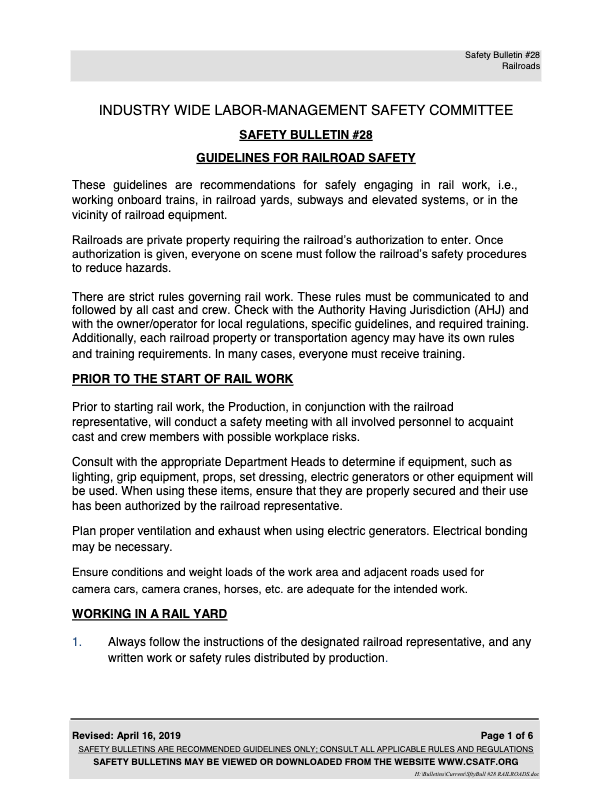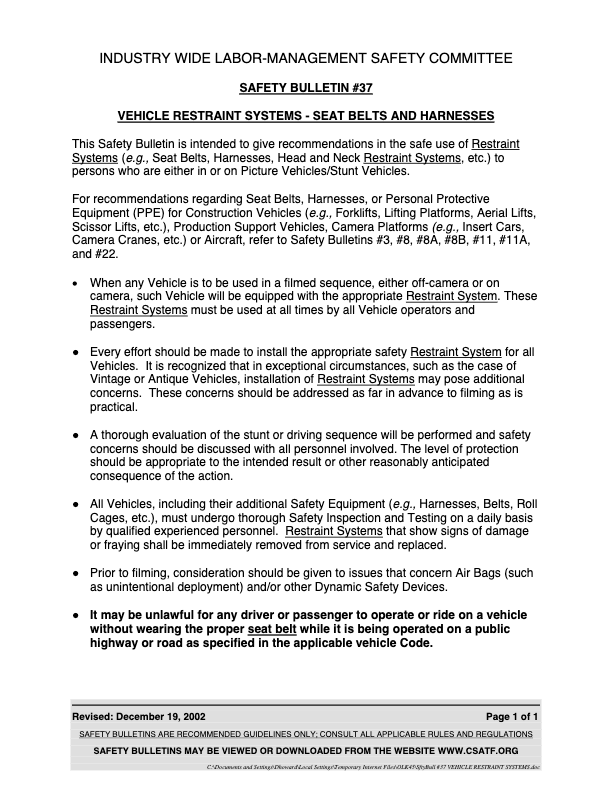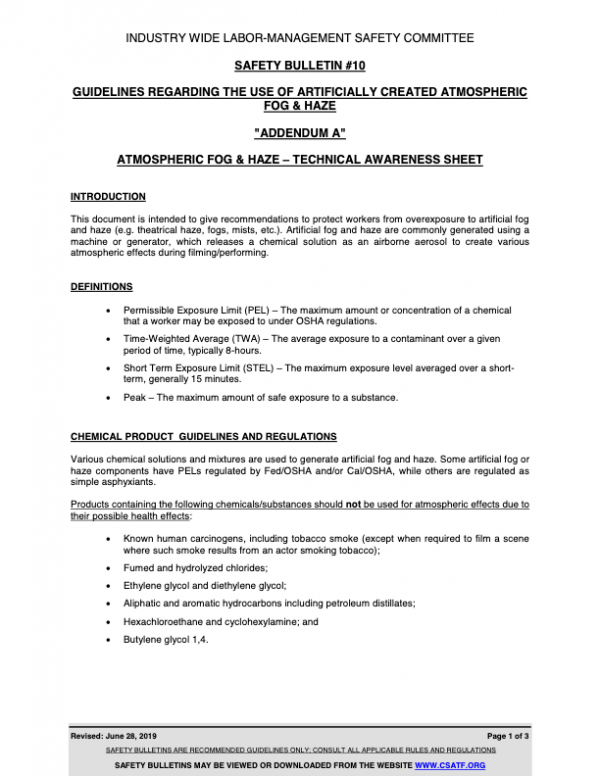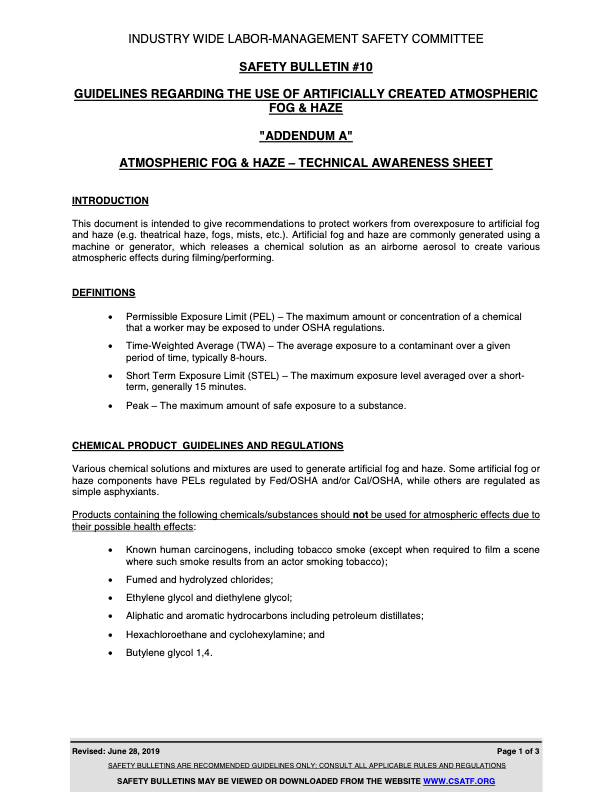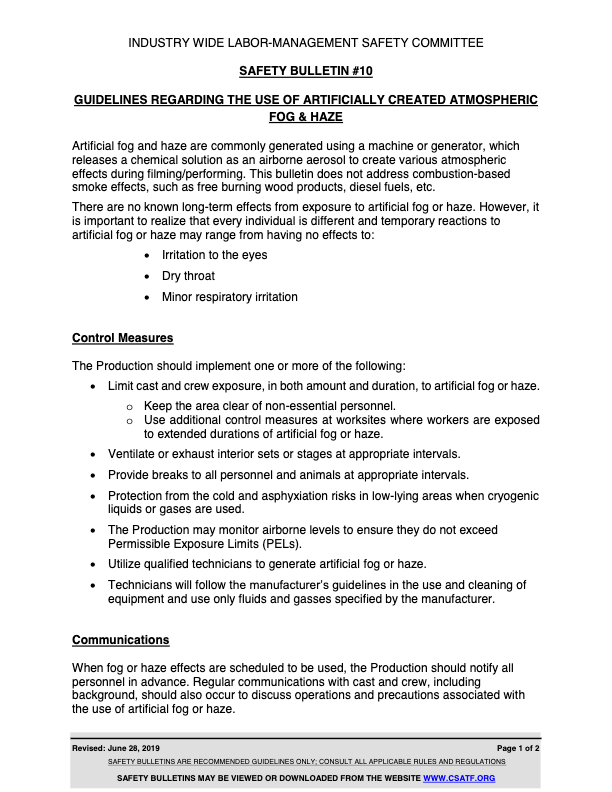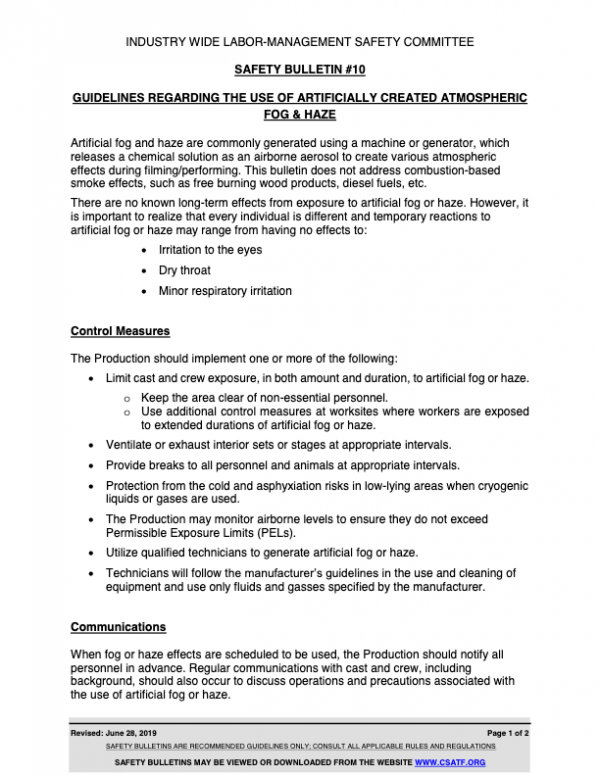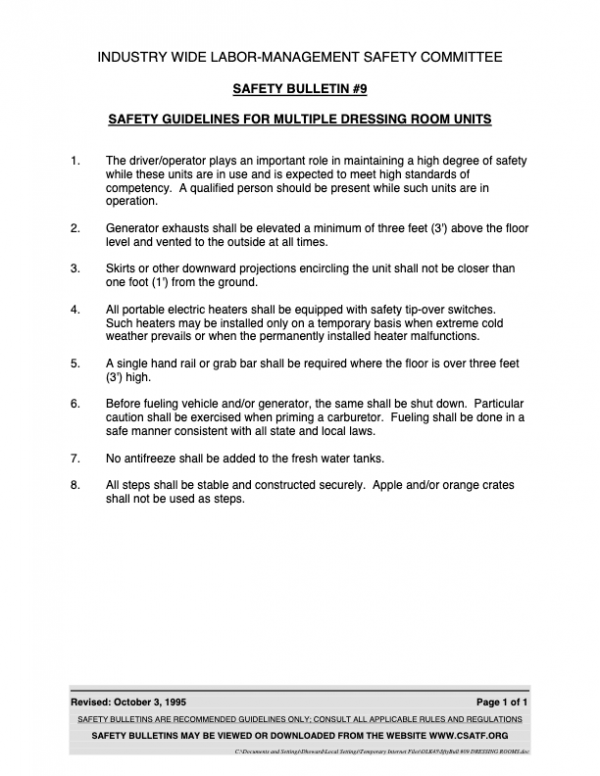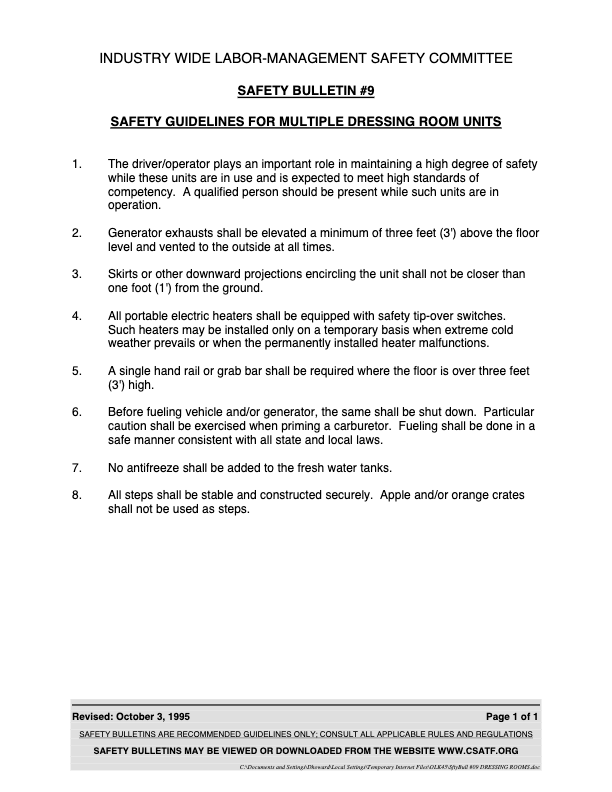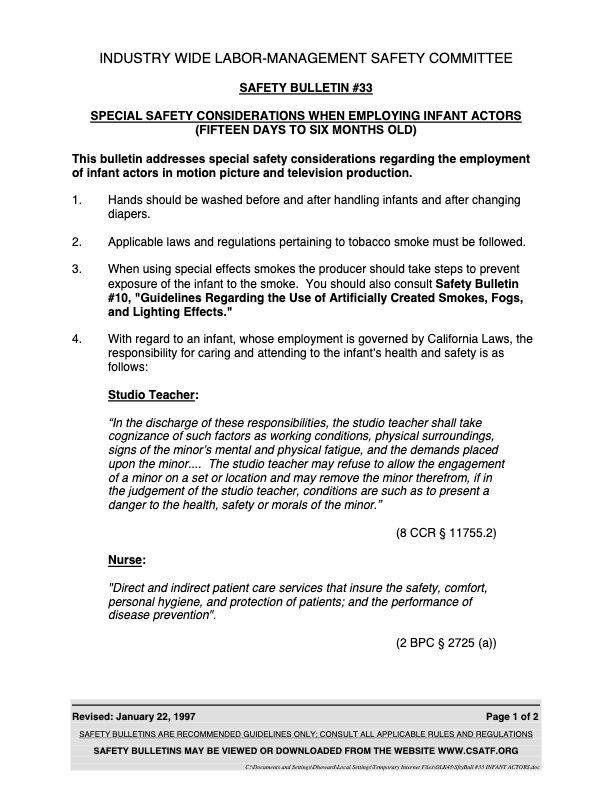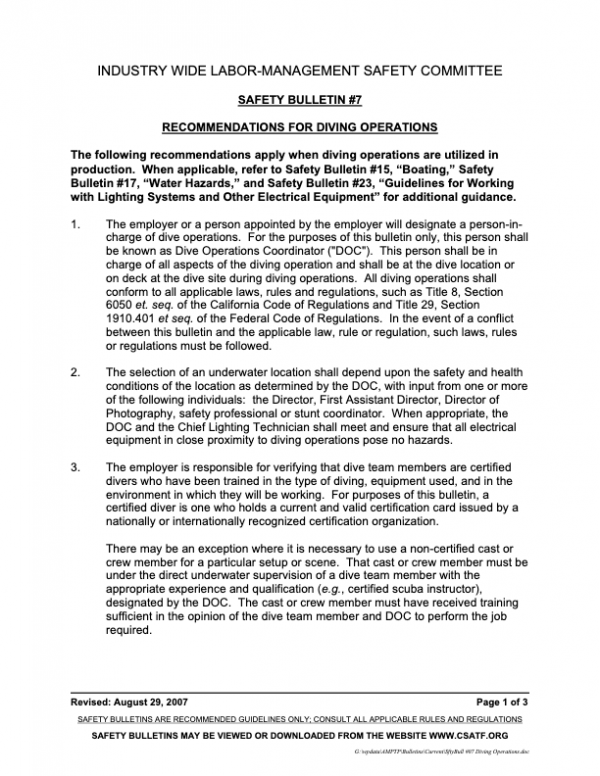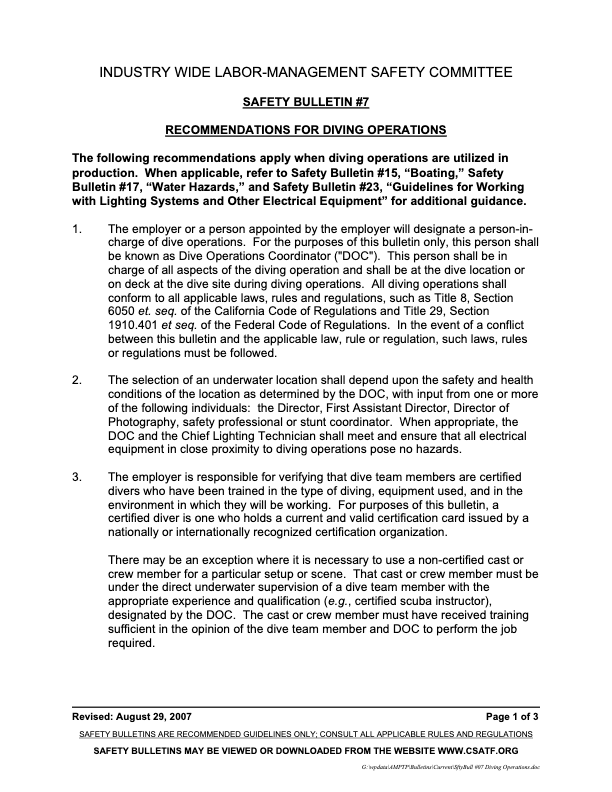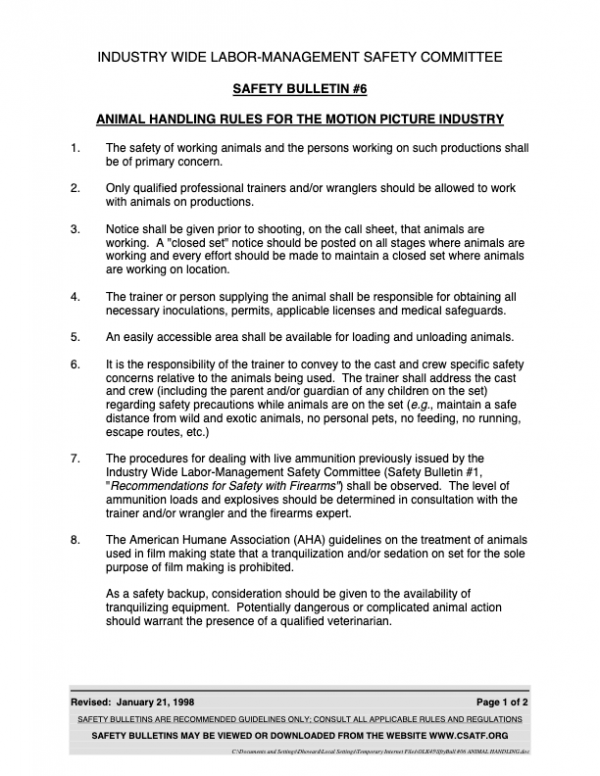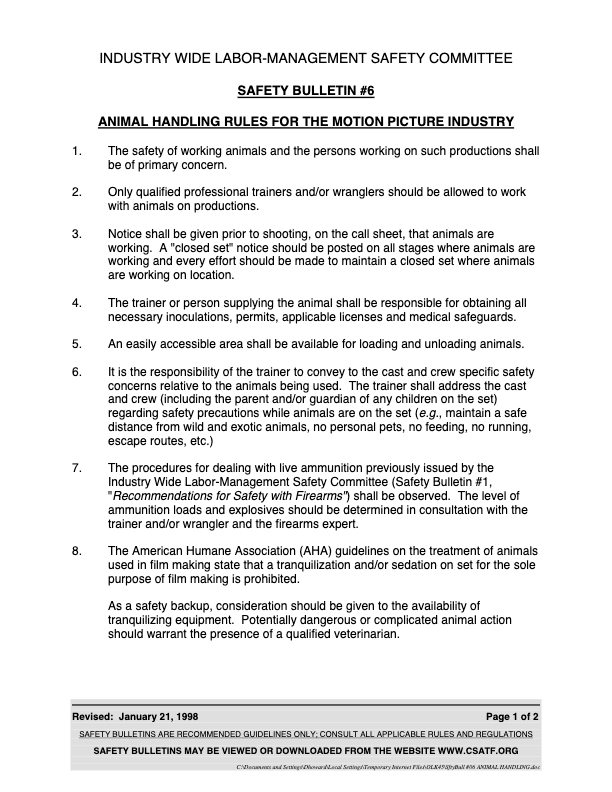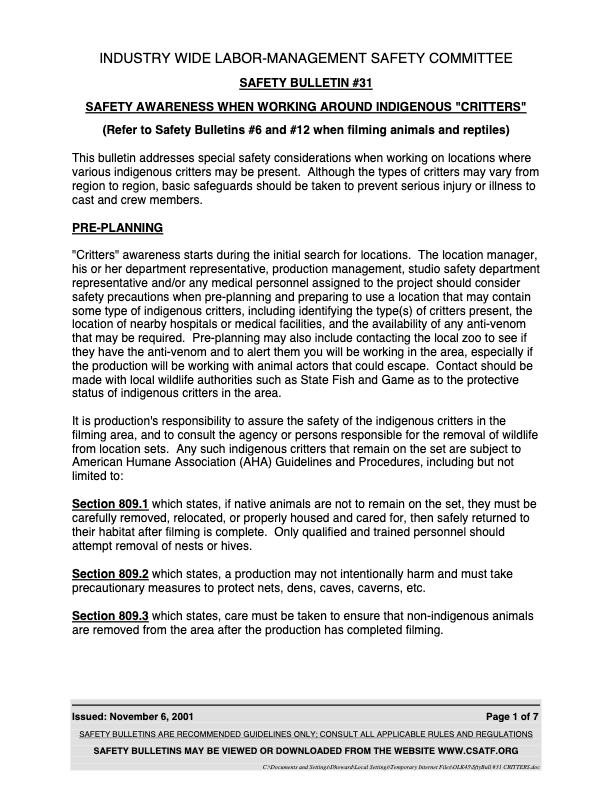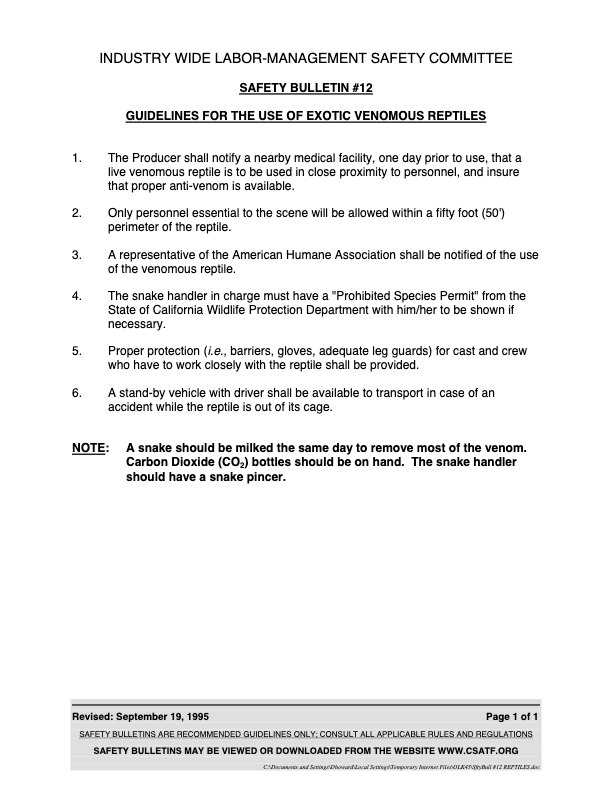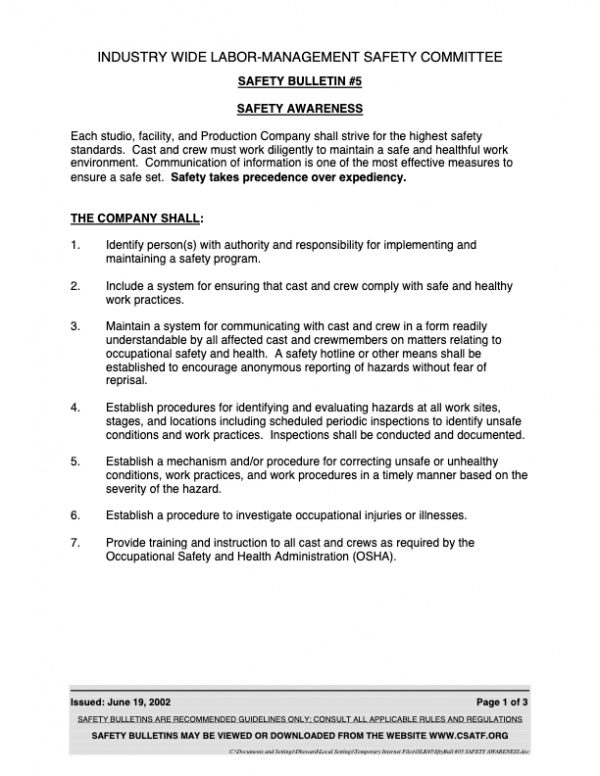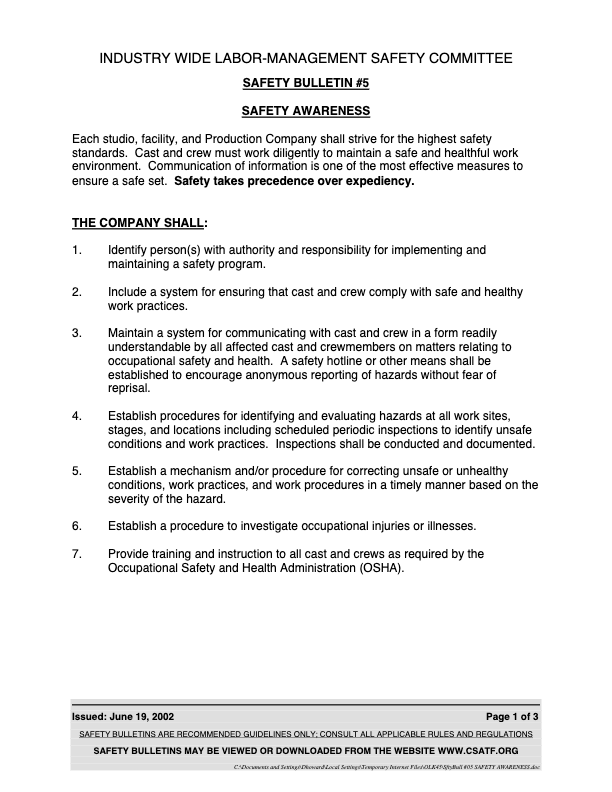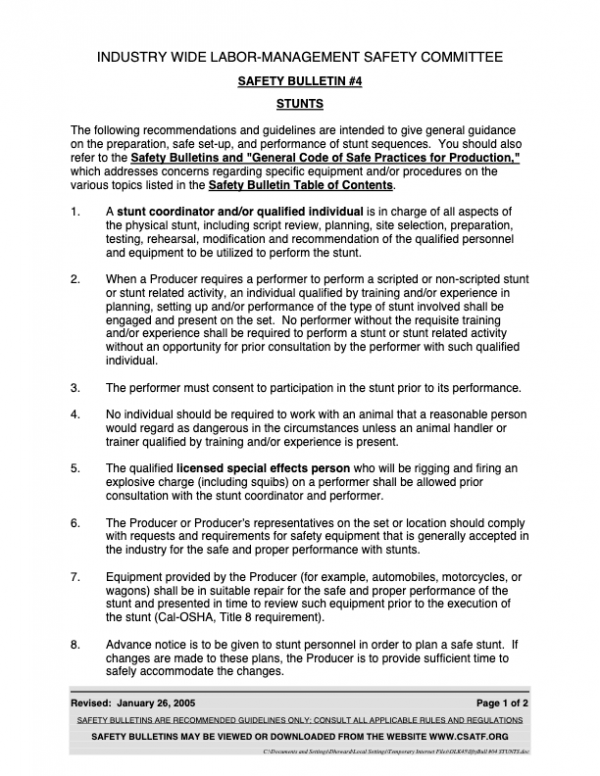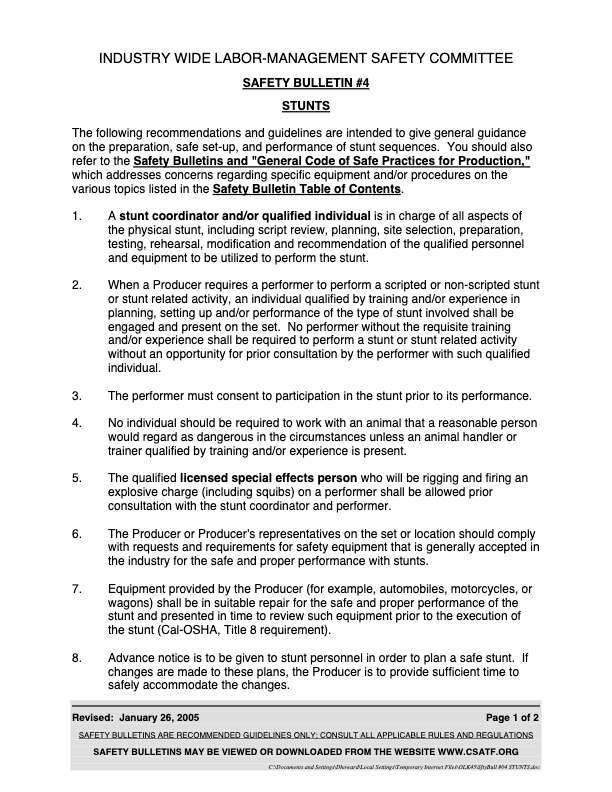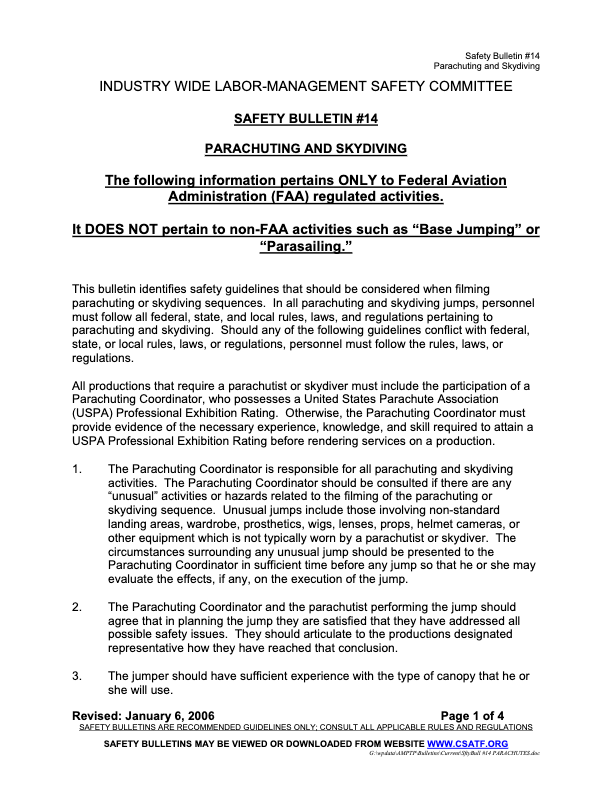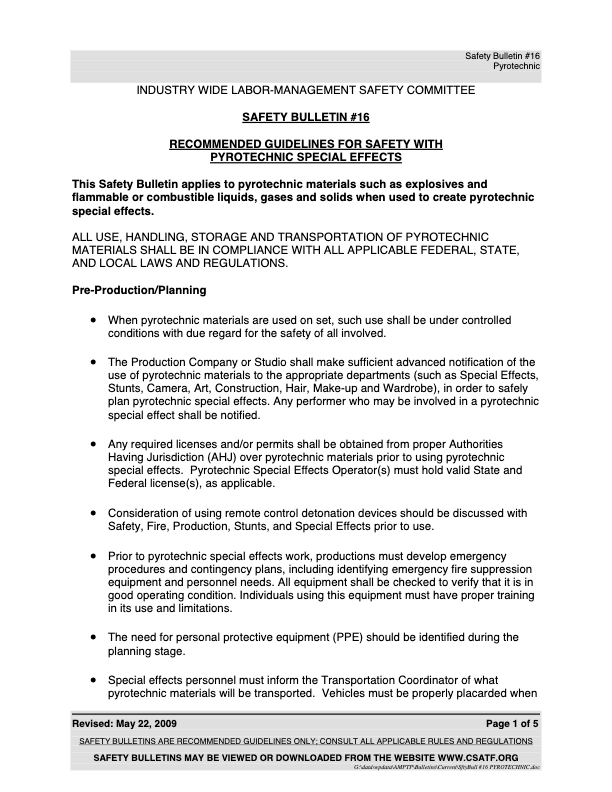Safety Meetings
In “On-Production” situations, safety meetings are strongly recommended to make all involved aware of the apparent and potential hazards in the day’s work. For example, safety meetings should be held: (1) when production moves to a new location; (2) when there is a significant change in cast and/or crew; (3) when stunts or special effects are scheduled or have changed; (4) when fatigue may be of concern; or (5) when there are significant changes to the original plan for the day.
Safety meetings should be conducted on the set by the First Assistant Director/Stage Manager and should be attended by all affected cast and crewmembers.
In “Off-Production” situations, the Construction Coordinator and/or Department Head should conduct safety meetings (toolbox talks, tailgate meetings, etc.) to address pertinent safety issues, use of specialized equipment, or unusual construction activities and/or rigging. The Construction Department is required to have a Safety Meeting at least once every ten (10) days, or when new equipment is introduced and/or when special situations require additional meetings.
The following procedures are recommended:
- Schedule safety meetings at the earliest time in which the majority of cast and/or crew can be assembled. Convey pertinent information to all personnel unable to attend.
- All safety meetings should be documented.
- Identify potential hazards. Department Heads should discuss hazards and establish safe working zones.
- Discuss emergency procedures, including identifying the location of fire alarms, fire extinguishers, emergency exits, first aid kits and telephones for 911 emergency calls. Additionally, explain studio/location safety program protocol, and identify medical or special emergency personnel (e.g., paramedics, police, and fire personnel).
- Present an evacuation plan in the event of an emergency. Remind all departments to keep fire lanes, electrical panels and exits clear at all times.
- Advise the cast and/or crew to notify the First Assistant Director/Stage Manager, Construction Coordinator and/or Department Head of any safety concerns or hazards.
- Inform cast and/or crew that, in the event of an injury, the set medic and the First Assistant Director/Stage Manager, Construction Coordinator and/or Department Head must be notified immediately. The First Assistant Director/Stage Manager, Construction Coordinator and/or Department Head will assess the situation and notify appropriate personnel, such as the UPM, Director, Producer, or Safety Representative, if applicable.
Check with your Safety Representative (if applicable) regarding additional rules, policies and/or guidelines that may apply to your specific work situation. Attach pertinent Safety Bulletins to the call sheets to deal with specific hazardous work.
